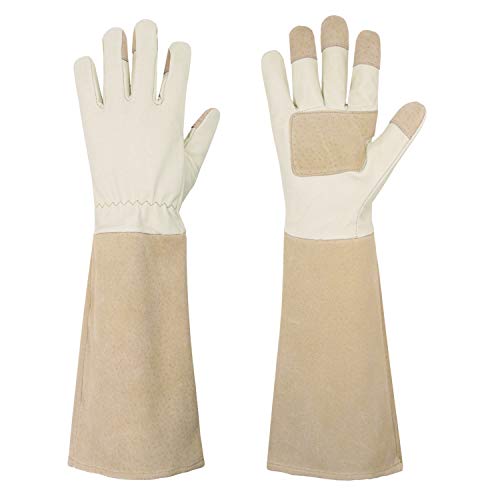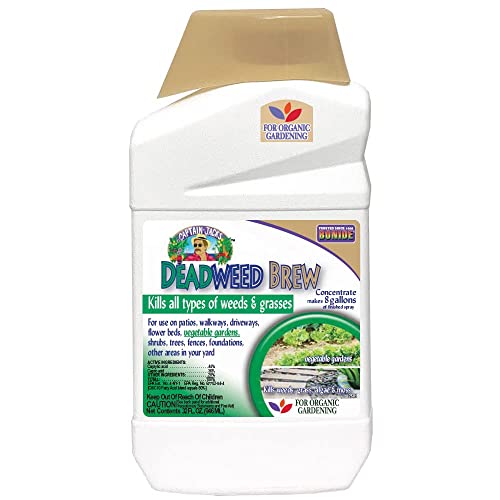How to eliminate invasive weeds in your yard – identify and eradicate problem plants from your borders
Learn how to spot and stop invasive weeds with our expert-approved guide
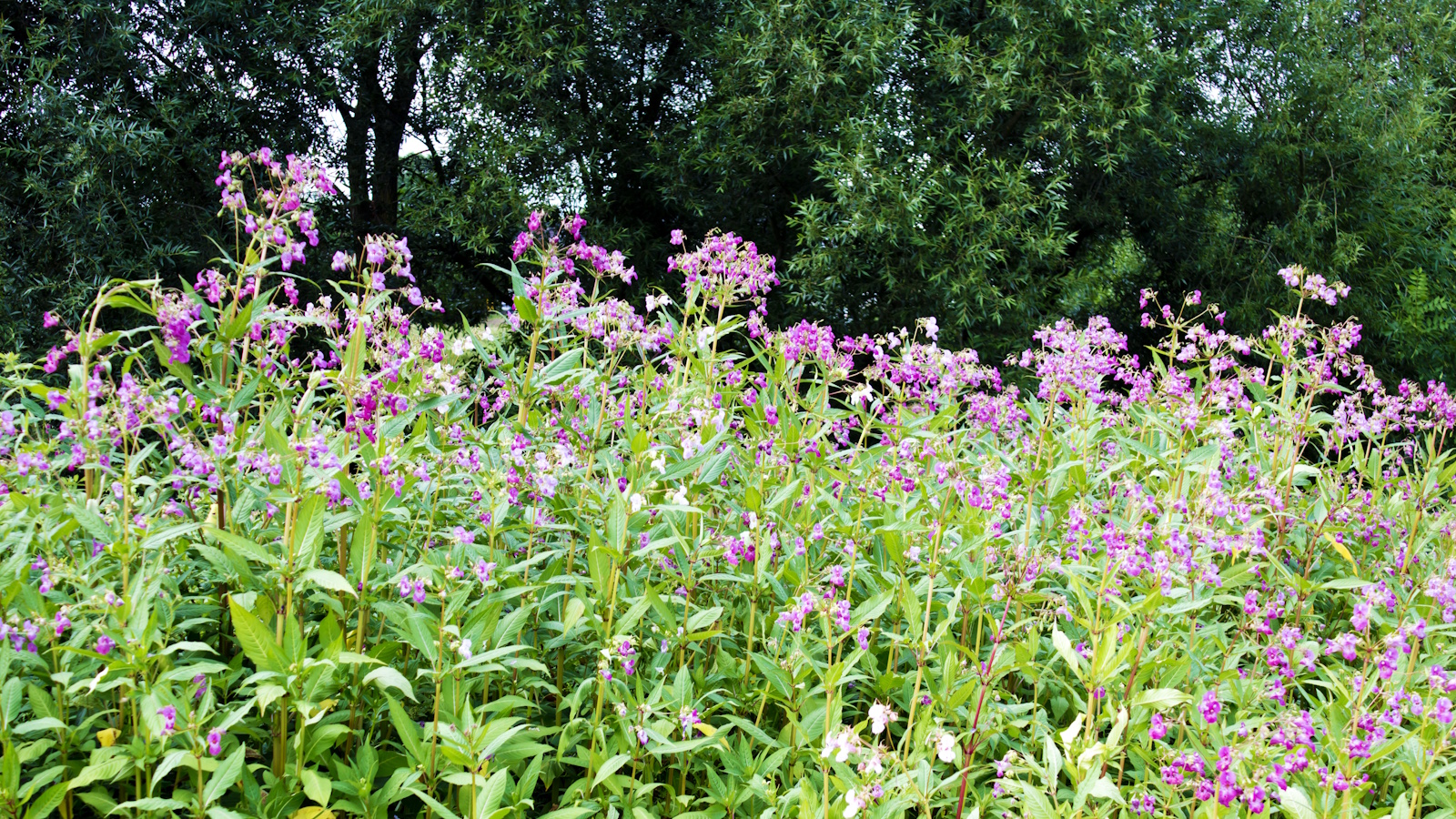

Weeds have long been villainized in the garden, seen as problem plants that grow where they are not wanted. In recent years, however, there has been a growing acceptance that tolerating less problematic weeds is necessary. After all, a few dandelions in the lawn isn't something to lose sleep over.
However, there are many vigorous, invasive weeds that exhibit a dangerous propensity to take over backyards. Many of these are non-native, swamping out native plants and dominating landscapes. Identifying and eliminating these invasive weeds is, therefore, important, and quick action can help to prevent minor outbreaks from turning into serious infestations.
So, if you are already clued up on invasive trees and invasive climbers to avoid, we have all the information you need on weeds. Here, garden experts reveal tips to spot, stop and eliminate common invasive weeds.
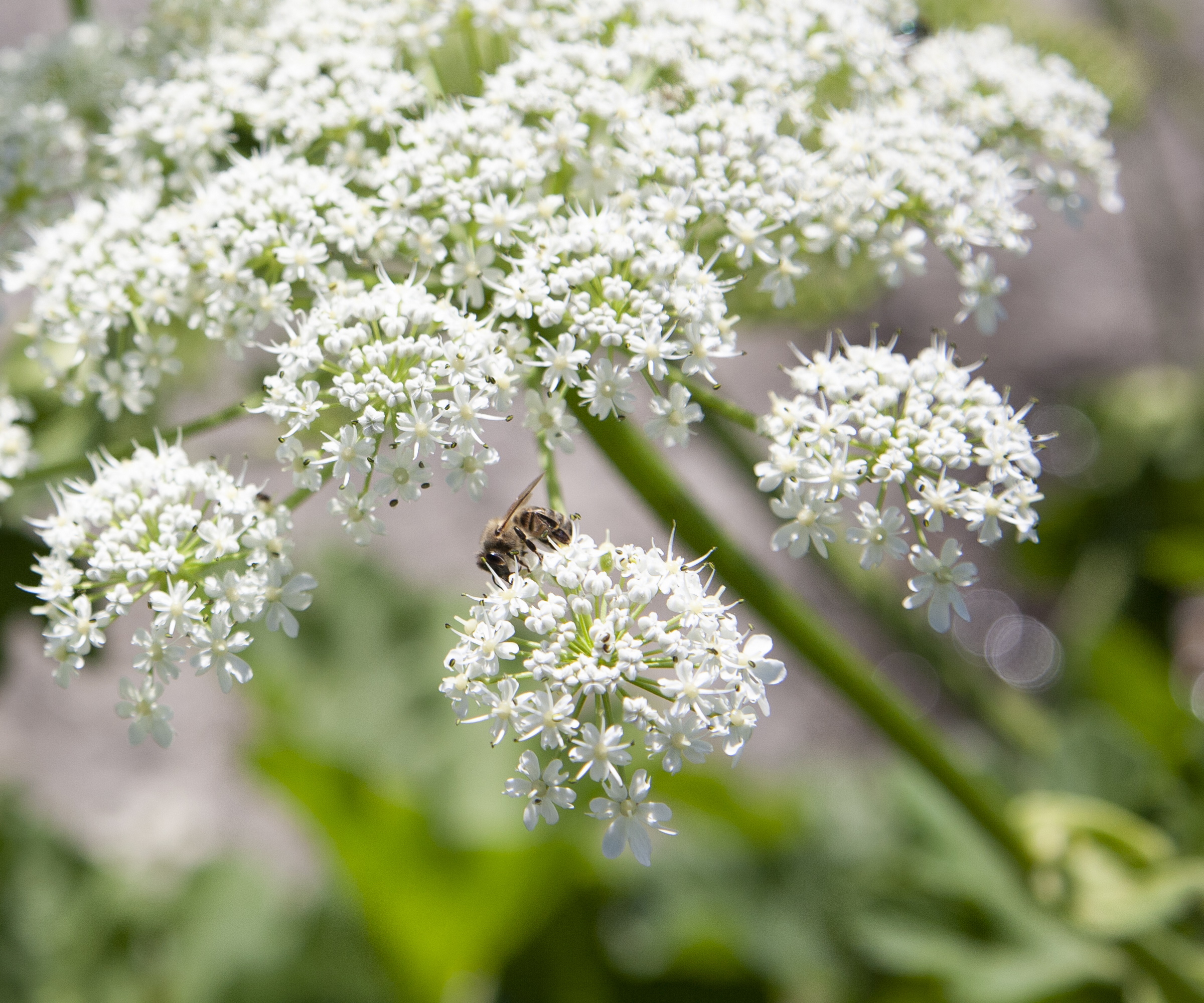
How to identify and eliminate invasive weeds
Many weeds are found growing across different climates, such as nettles or clover, whereas some problem plants are only found growing in certain regions or US hardiness zones. The kudzu vine, for example, is typically found in warmer, southern regions. So, if you are looking for advice on how to keep weeds out of flower beds, you have come to the right place. Here, we outline how to identify and eradicate five common invasive weeds.
1. Giant hogweed
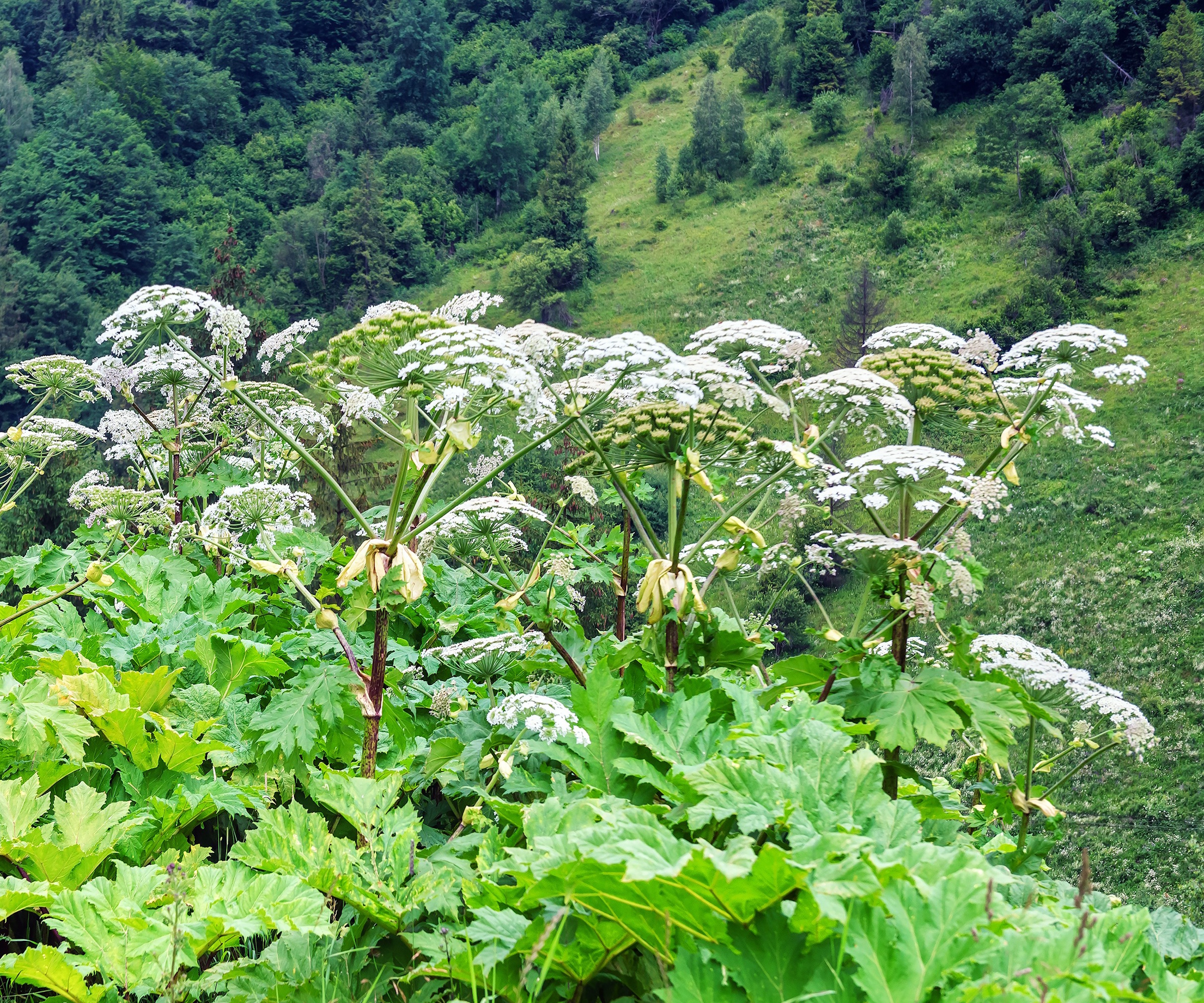
Giant hogweed, Heracleum mantegazzianum, is a large, toxic perennial weed growing from US hardiness zone 3 and thriving in cool, wet and mild regions.
'Giant hogweed is found across North America, proving to be problematic in Oregon, Washington and parts of Canada,' says Scott Seargeant, garden expert, arborist and landscaper based in California. 'It can grow ten to fifteen feet tall with large incised leaves (irregularly jagged).
'Giant hogweed is a member of the carrot family, producing white flower umbels in summer, typically around June,' Scott adds. 'While the flowers might be attractive, giant hogweed is considered a poisonous plant, as the sap can burn the skin and cause dermatitis.
'The best way to remove giant hogweed is to pull it out after it first emerges in spring, but care must be taken not to let the plant touch your skin. Wear protective long-sleeved gardening gloves, like these from Amazon.
Giant hogweed has a deep taproot that looks similar to a parsnip. As a former professional gardener, I have found that removing weeds with taproots, like giant hogweed, is best done on a slightly damp, wet day. In clay soils, for example, taproots will slide out when the ground is wet, whereas they can easily snap in dry, compacted borders.
One common weeding mistake to avoid is incorrectly disposing of waste material. 'Do not burn the plant as the toxic materials will become airborne, and inhalation is harmful,' Scott warns. 'Giant hogweed also grows from seeds, so take time to carefully snip any flower heads into a green waste sack and dispose of them in waste collection. Patience and consistency are crucial to removing hogweed, but it can be done.'

I’m an International Arborist and landscape contractor in California. I have extensive knowledge of trees, what keeps them healthy, and what makes them unhealthy. I also have a college degree and am experienced and knowledgeable on all gardening and landscaping topics.
2. Nutgrass

Nutgrass, Cyperus rotundus, is a common, aggressive weed that can quickly get out of hand. 'Nutgrass is fast-growing, spreading by white rhizomes, or underground stems that quickly produce tubers called nutlets,' says Scott. 'These nutlets produce new plants that repeat the cycle and help to spread this plant across fields, yards and borders.
'It is easy to identify nutgrass,' Scott continues. 'These invasive weeds have triangular stems about four to six inches long and tend to pop up on the lawn one or two days after mowing. They also produce brown flowers that quickly produce and spread seeds.
'To control nutgrass, you can use a selective herbicide especially made for nutgrass,' says Scott, which is ideal if you are wondering how to kill weeds but not grass. 'Alternatively, for smaller outbreaks, you can pull nutgrass including the root, although removing the nutlets from the soil will prove tricky.'
While many organic, natural products are not as selective and can also damage lawns, sacrificing some turf might be necessary. Using a natural vinegar-based solution, for example, will remove nutgrass, but will also kill turf too. Organic weedkillers are available from Walmart.
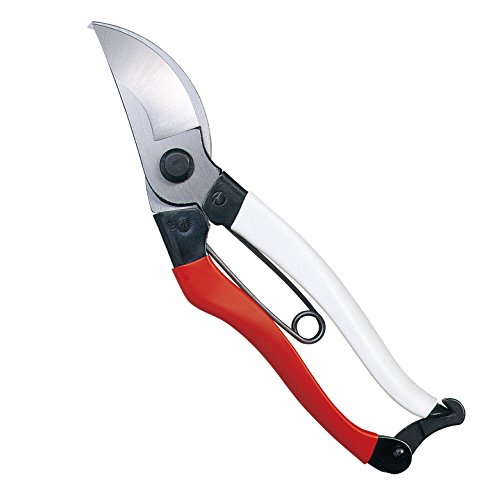
These Okatsune pruning snips will easily cut through stems and branches when removing problem plants in any yard.
3. Bermuda grass
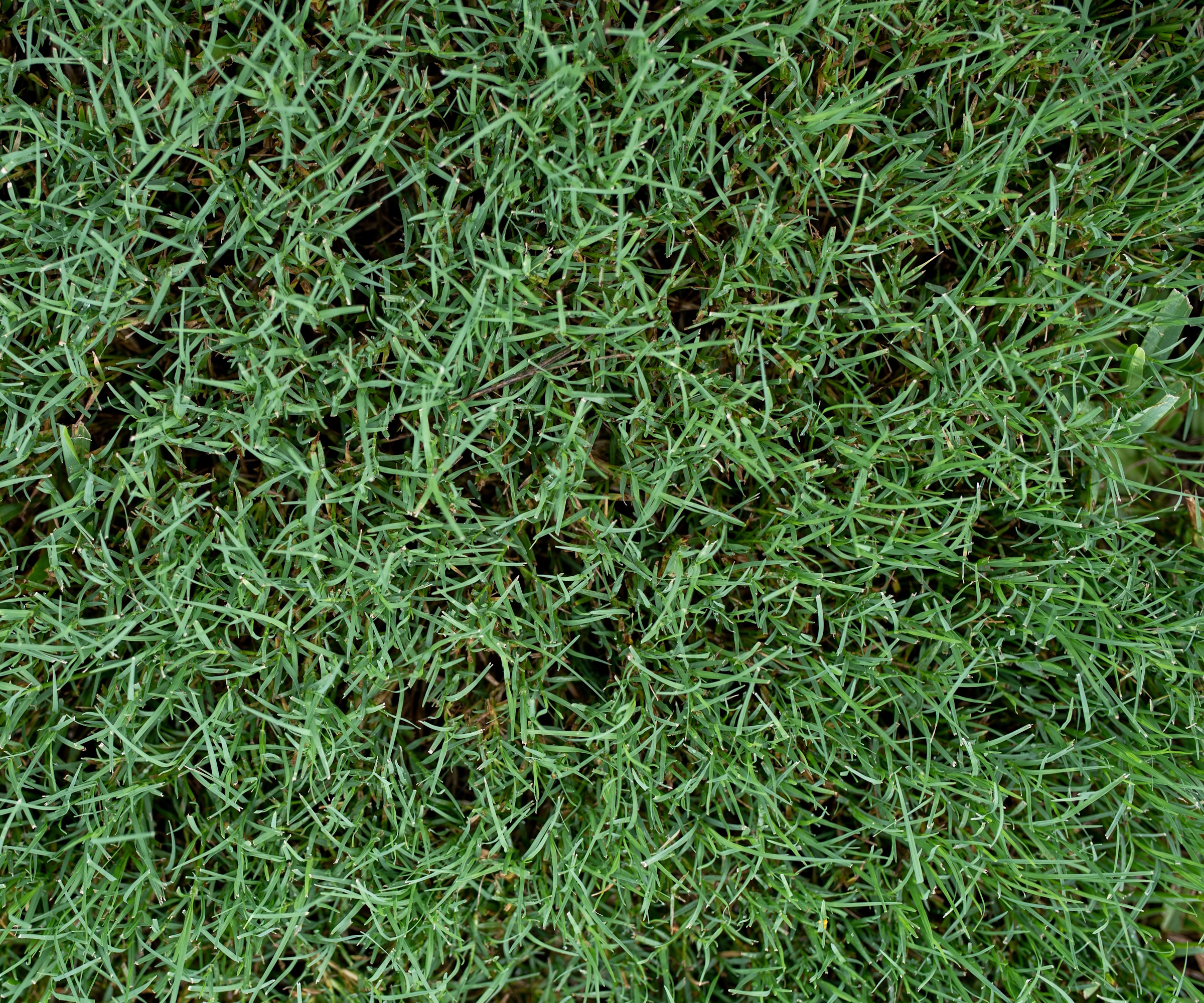
'Bermuda grass, Cynodon dactylon, is an aggressive grass that will establish wherever there is sun and water, growing as low as US hardiness zone 5,' says Scott. 'It is generally darker green and finer in texture, as you can see here. The blades also have a pointy tip, which should be easy to spot.
'They spread by stolons or rhizomes underground which can be hard to eradicate. Seeds are also produced on six-inch helicopter-like stalks that disperse by wind and hitch a ride on shoes, clothing and animal fur.
'These invasive plants can produce seed stalks in eight to ten days depending on the climate,' Scott says. 'This makes it imperative to mow Bermuda grass every week during the growing season to prevent flower production. While persistent mowing will help, I have found that the best control is using a herbicide spray that will kill Bermuda grass.'
4. Kudzu
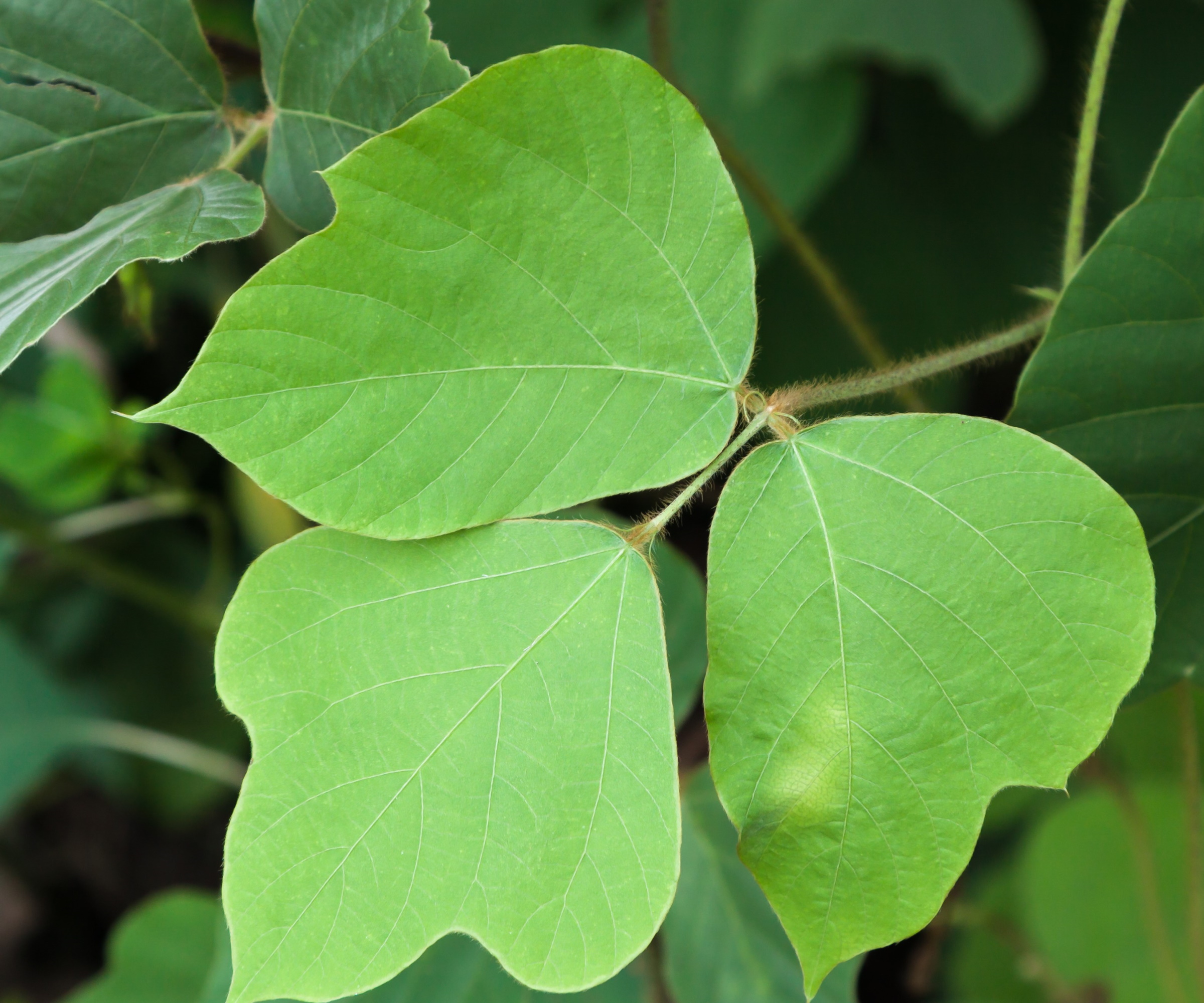
'In my years of working with homeowners to create and maintain thriving landscapes, I’ve encountered my fair share of invasive weeds including kudzu,' says Jimmy Patterson, founder and president of TruScape, based in Pennsylvania. 'These plants are more than just a gardening annoyance - they can cause significant damage to ecosystems and even pose health risks if not dealt with promptly.'
Kudzu, Pueraria montana, is a deciduous invasive vine that engulfs all native plants in its path, starving them of sunlight and water. The leaves are three to four inches long with an oval or heart-like shape with small hairs. As a member of the pea family, Fabaceae, the flowers are identifiable as pea-like, similar in shape to lupines, and will open in a purple or pink color.
'Known as the vine that ate the South, kudzu cannot be left untreated,' Jimmy continues. 'If you ignore this invasive weed, it will aggressively smother trees and shrubs in no time.'
'The key to managing these invasive species is vigilance and persistence. Kudzu often demands a combination of repeated mowing or cutting, lifting roots and targeted herbicide use to control its rapid spread,' Jimmy advises.
Mowing or cutting the vines will slow the plant down but not eradicate it, although a combination of cutting and lifting - while hard work - is a non-chemical way to eliminate kudzu. Many gardeners also suggest using grazing animals to eat the vines, so if you fancy yourself as a smallholder or farmer, this could be one option to consider. Just be careful the animals do not eat the plants you want to keep!

Jimmy Patterson is the founder and president of TruScape LLC, a leading provider of residential and commercial landscape maintenance and construction services based in Greensburg, Pennsylvania. With a strong presence across Westmoreland and Allegheny counties, Jimmy has built TruScape on a foundation of quality craftsmanship, exceptional customer service, and innovative solutions tailored to the unique needs of each client.
5. Himalayan balsam
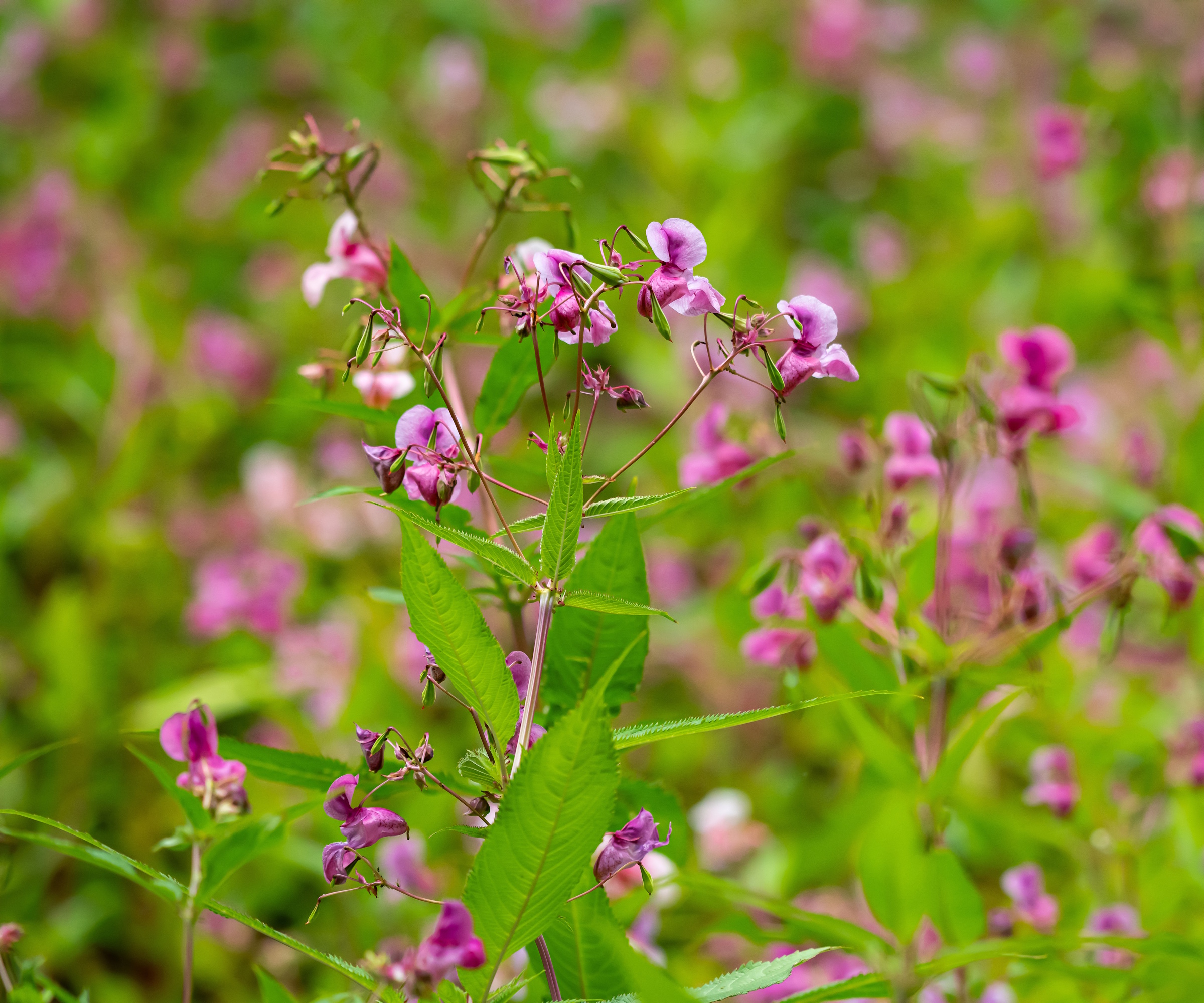
Himalayan balsam, or Impatiens glandulifera, is today widely naturalized along riverbanks and ditches across the UK and the US. This invasive plant might look pretty, producing pink flowers in summer, but it will quickly dominate ecosystems at the expense of native plants.
This problem plant typically grows from three to eight feet in height, sometimes taller, with lime-green leaves that are elongated and usually measure up to six inches. The plant can produce a strong musty smell that fills the air, particularly on rainy days.
Hand pulling is an effective method of removing Himalayan balsam. This annual has a shallow root system, so by lifting stems and roots early in the year, you will prevent these weeds from producing flowers or seeds.
If you have a larger infestation of Himalayan balsam, you can use a trimmer to cut the plant down to the base, disposing of the cuttings in your green waste collection. While it might take a few years to eradicate, persistent removal by hand will keep your yard free of chemicals and hopefully, free of Himalayan balsam. Try something like this Black and Decker cordless strimmer, available from Amazon, to get the job done.
FAQs
Are there any plants that can prevent weeds from growing?
Growing some of the best plants to stop weeds can help prevent the spread of unwelcome annual and perennial weeds. While weeds are vigorous and are impossible to eliminate, using plants that have dense root systems and evergreen foliage can reduce the opportunities for weeds to develop. Why not try growing the native Juniperus horizontalis, commonly known as the creeping juniper, available from Walmart? If you are wondering how to get rid of weeds without using chemicals, then growing evergreen juniper is a good idea.
When buying new plants, it is always a good idea to check the soil for any small seedlings that have germinated and are growing in the base of the pot. Often, invasive species can find their way into gardens in the soil of newly purchased plants, so it is always good to keep an eye out and apply vigilance when transporting plant material.
For more information, see our guide on invasive bulbs to avoid planting in your yard.
Sign up to the Homes & Gardens newsletter
Design expertise in your inbox – from inspiring decorating ideas and beautiful celebrity homes to practical gardening advice and shopping round-ups.

Thomas is a Content Editor within the Gardens Team at Homes and Gardens. He has worked as a professional gardener for both public spaces and private estates, specializing in productive gardening, growing food and flowers. Trained in Horticulture at the Garden Museum, he has written on gardening and garden history for various publications, including The English Garden, Gardens Illustrated, Hortus, The London Gardener and Bloom. He has co-authored a Lonely Planet travel book, The Tree Atlas, due out in 2024.
-
 Martha Stewart's intelligent cabinets 'take every inch into consideration' – their 'visually light' style will solve your small kitchen storage problems
Martha Stewart's intelligent cabinets 'take every inch into consideration' – their 'visually light' style will solve your small kitchen storage problems'Every kitchen can be beautiful and functional, no matter what the size': 9 years since sharing her clever storage, Martha's cabinets are just as beautiful
By Megan Slack Published
-
 This once-dated kitchen is now a timeless space with the coziest details – and its the classic color palette that's made it a chic, welcoming space
This once-dated kitchen is now a timeless space with the coziest details – and its the classic color palette that's made it a chic, welcoming spaceWarming colors and natural materials combine to create this enduringly classic kitchen scheme
By Molly Malsom Published
-
 How to grow crepe myrtle in pots – and transform even the smallest of yards with dazzling flowers this summer
How to grow crepe myrtle in pots – and transform even the smallest of yards with dazzling flowers this summerGrowing crepe myrtles in pots will inject splashes of brilliant color into your outside space
By Thomas Rutter Published
-
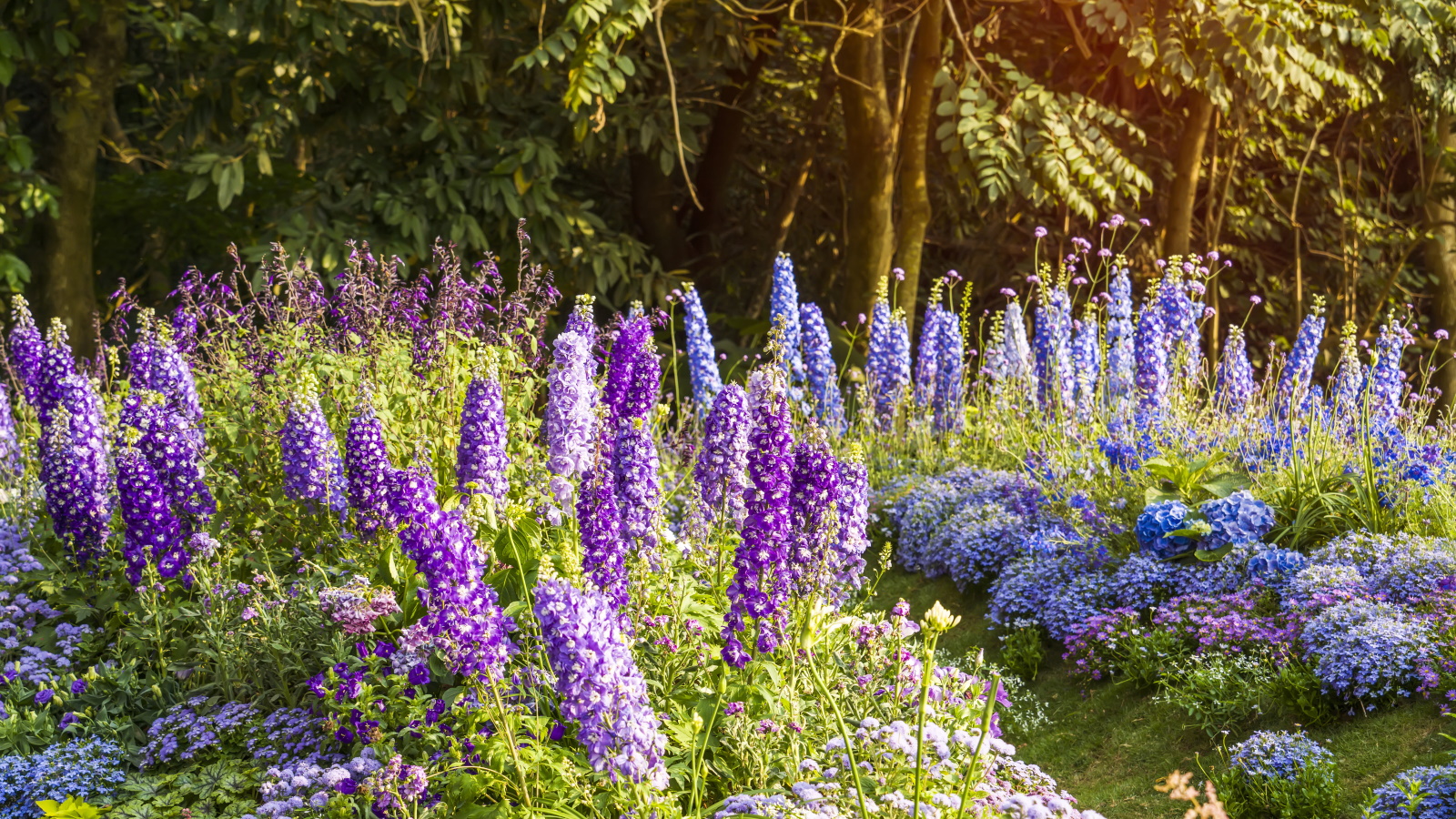 Best types of delphiniums – 14 stunning varieties for vibrant flower spikes in your yard
Best types of delphiniums – 14 stunning varieties for vibrant flower spikes in your yardPlants Here are our top types of delphiniums for brightening summer borders
By Holly Crossley Published
-
 How to grow impatiens – garden experts reveal the secrets to growing this shade-tolerant, sparkling summer plant
How to grow impatiens – garden experts reveal the secrets to growing this shade-tolerant, sparkling summer plantBoth 'Busy Lizzie' and 'New Guinea' impatiens can thrive in shady yards
By Ellen Wells Published
-
 How to grow astilbe – expert advice on cultivating this shade-tolerant flowering perennial
How to grow astilbe – expert advice on cultivating this shade-tolerant flowering perennialShade-tolerant and pest-resistant - astilbe are hardy and tough perennials that can thrive in many settings
By Ellen Wells Published
-
 7 native perennials to plant in April – for glorious flowering displays to attract bees, butterflies, and hummingbirds
7 native perennials to plant in April – for glorious flowering displays to attract bees, butterflies, and hummingbirdsDiscover some of the best perennials to plant in April to make your garden a hotspot for wildlife
By Drew Swainston Published
-
 Is the viral salt hack the secret to a weed-free patio? A garden expert warns of irreparable, long-term damage – plus reveals the safest way to get results
Is the viral salt hack the secret to a weed-free patio? A garden expert warns of irreparable, long-term damage – plus reveals the safest way to get resultsYou might have seen gardeners on TikTok or Instagram using salt to kill weeds in pavers, but this hack should be avoided at all costs
By Thomas Rutter Published
-
 Worst-smelling plants to avoid – experts reveal 5 pungent species and suggest perfumed options to grow instead
Worst-smelling plants to avoid – experts reveal 5 pungent species and suggest perfumed options to grow insteadThese are some of the worst-smelling plants that can cause quite a stink
By Thomas Rutter Published
-
 How to fertilize magnolias – garden experts reveal the secrets to better blooming, and timing is critical
How to fertilize magnolias – garden experts reveal the secrets to better blooming, and timing is criticalMagnolias are famed for their spring flowers, and feeding at the right time can give trees a boost
By Thomas Rutter Published
